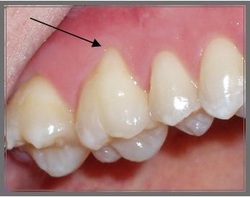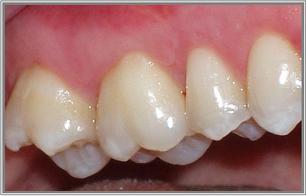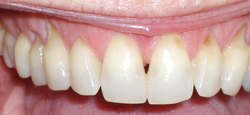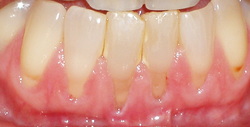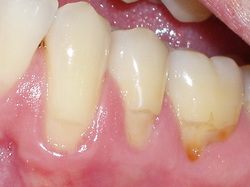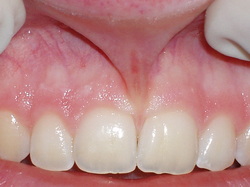Gingival Grafting
Soft Tissue grafts are done to prevent further recession, stop further
dental problems or improve the esthetics of your smiles
Soft Tissue grafts are done to prevent further recession, stop further
dental problems or improve the esthetics of your smiles
The architecture of gums around teeth is the picture frame for a beautiful smile. According to the American Academy of Periodontology soft tissue grafting procedures are available to inhibit further dental problems due to gum recession, and/or to improve the esthetics of your gum line. Exposed tooth roots caused by bone loss results in gum recession. Perhaps you wish to enhance your smile by covering one or more of these roots that make your teeth appear too long. Or, maybe you're not bothered by the appearance of these areas, but you cringe because the exposed roots are sensitive to hot or cold foods and liquids.
Your gums may have receded for a variety of reasons, including heredity, aggressive tooth brushing, orthodontic treatment, or periodontal disease. You may not be in control of what caused the recession, but prior to treatment your periodontist can help you identify the factors contributing to the problem. Once these contributing factors are controlled, a soft tissue graft procedure can repair the defect and help to prevent additional recession and bone loss.
Soft tissue grafts can be used to cover roots or develop gum tissue where absent due to excessive gingival recession. During this procedure, your periodontist takes gum tissue from your palate or another donor source to cover the exposed root. This can be done for one tooth or several teeth to restore an even gum line and reduce sensitivity.
What are the benefits of this procedure?
1) A soft tissue graft can reduce further recession and bone loss.
2) In some cases, it can cover exposed roots to protect them from root decay.
3) Reduce tooth sensitivity
4) Improve esthetics of your smile.
5) Enhancement of tissue quality under bridges and pontics.
Consequences of leaving recession untreated:
1) Potential for continuing bone loss over time
2) Significant potential for root caries as patients age and are required to take medications which decreases salivary flow.
3) Repetitive replacement of filling at the gumline due to decay causes gingival recession and loss of structural support.
Whether you have a soft tissue graft to improve function or esthetics, patients often receive the benefits of both: a beautiful new smile and improved periodontal health – your keys to smiling, eating and speaking with comfort and confidence.
Frenectomies and Fiberotomies
Frenectomies remove unfavorable soft tissue and muscle attachments. Fiberotomies release the connective tissue attachment around the teeth. Both treatments aid in the retention of teeth that have been orthodontically treated.
Photo Credits: Christine M. Ford, DDS





